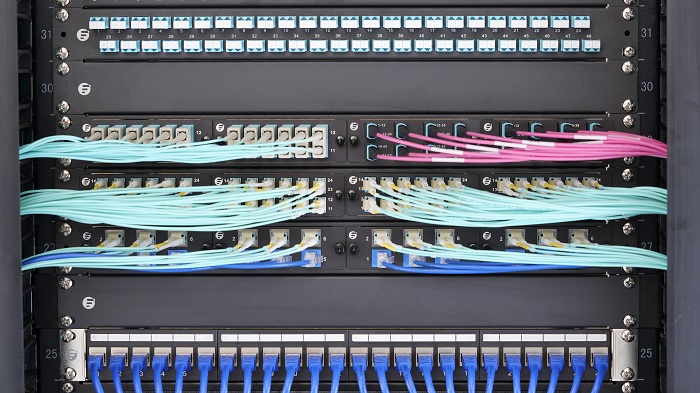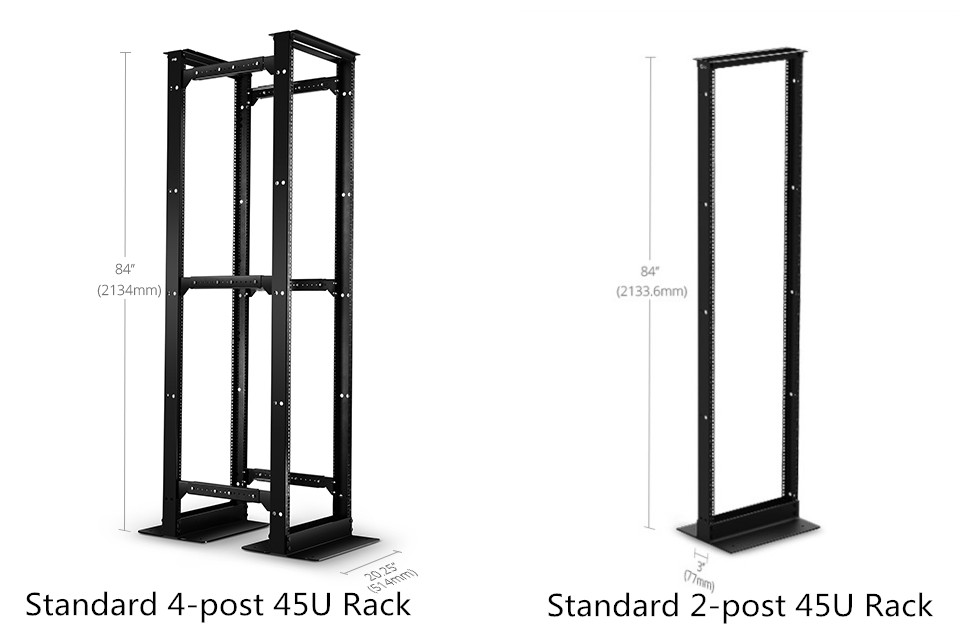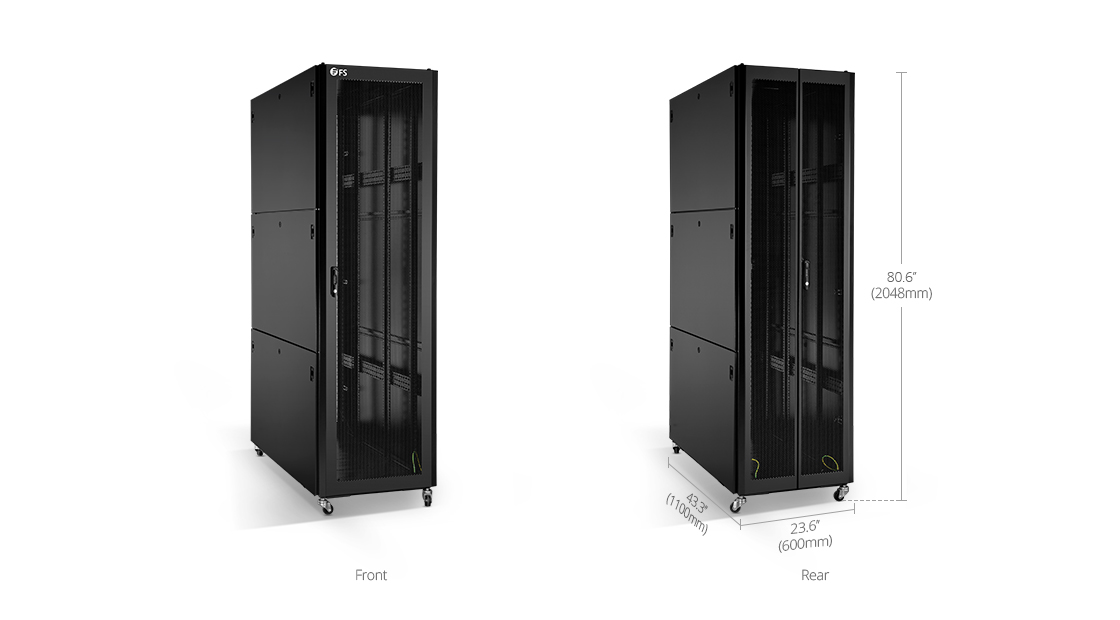With the increasing demand for computing power and space in the data center, server cabinet, network cabinet, server rack and network rack are often used to hold networking hardware and assemblies in data center. Well, among them, which one matches your needs best? It is thus essential to find the answer.

Figure 1: cable management
What Are Server Rack And Network Rack?
A commonly used server rack is open frame with mounting rails but no sides or doors. It is applied to accommodate equipments such as servers, storage and monitors. Server racks come in many different shapes and sizes. The width of a server rack is always the same with the standard (traditional) size of 19 inches, while the height and depth can be various. Besides, it has two basic types: 2-post and 4-post rack. As shown in the figure 2:
A network rack is similar to the server rack in sizes and shapes. It is also called relay rack or open rack. It is a metal frame chassis that holds, stacks, organizes, secures and protects various computer network and server hardware devices.

Figure 2: server rack
There are several advantages of server racks and network racks:
- Better Air Flow – The rack is just an open structure with no doors, which allows abundant and unobstructed airflow to help to cool the equipment.1
- Ideal for Cable Management – Since the rack can offer enough open space and easy access, it is convenient for us to install and manage hundreds or even thousands of devices and cables in the open rack.
Despite these advantages, the server rack and network rack have some challenges:
- Insecurity – Anyone has access to the rack, so the equipment in the rack is lack of security.
- Exposed to Dust – The equipment mounted on the rack is exposed to the dust, debris and other contaminants, which may cause the equipment damaged over time.
What Are Server Cabinet And Network Cabinet?
A server cabinet, also called an enclosed rack, has removable front and rear doors, side panels and four adjustable vertical mounting rails. The standard data center server cabinet has a height of 42U (73.5 inches high). And for the most part, server cabinets are 24 inches in width, and 36 inches deep. Nowadays, server cabinets have gained much popularity in data centers and server rooms.
A network cabinet is generally used for routers, switches, fiber patch panels and other networking equipments. In most cases, a network cabinet is far shallower than a server cabinet, generally less than 31 inches deep. It sometimes has a glass or a strong plastic front door. What’s more, the network cabinet also commonly do not have perforated enclosures.

Figure 3: server cabinet
Cabinets are popular mainly for the following reasons:
- More Secure – Unlike the insecure rack, cabinet can provide added protection. The cabinet can be locked, which might avoid visitors or other unauthorized people accessing the equipment.
- Added More Protection for Cables – With doors and side panels, the cables in the cabinet has much less access to outside air. So it can help the cables to reduce the risk of getting damaged by contaminants.
- Better of Air Segregation – Server cabinets can be used by engineer to provide a variety of air segregation strategies, for instance, cold aisle containment, hot aisle containment, and cabinet-level containment.
However, there are some disadvantages:
- High Price – Compared to the rack, cabinet is significantly more expensive.
- Uneasy Accessibility – Due to the restricted accessibility, it takes more time to do the operation or maintenance of the equipment in a cabinet.
Conclusion
When you are designing a data center, deciding which server rack & cabinet or network rack & cabinet to deploy should be put at the first place. The right one that meets your installation demand can help you improve power protection, cooling, cable management, and physical security. Well, FS.COM offers all of the solutions mentioned above, which can help you maximize the work efficiency and minimize the downtime risks of networks. Welcome to visit fs.com.
Related Article: Proper Vertical Rack Cable Management Solutions




